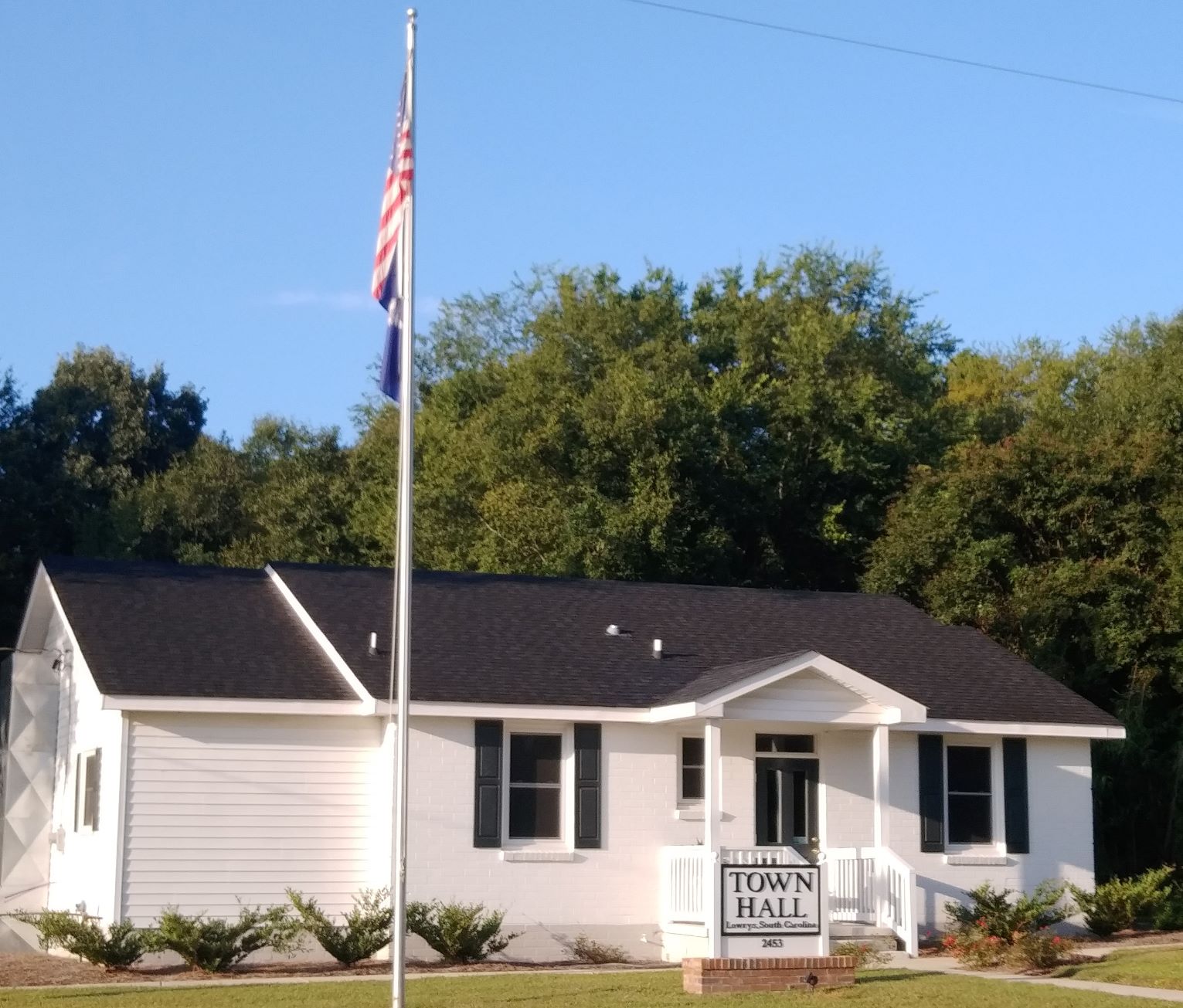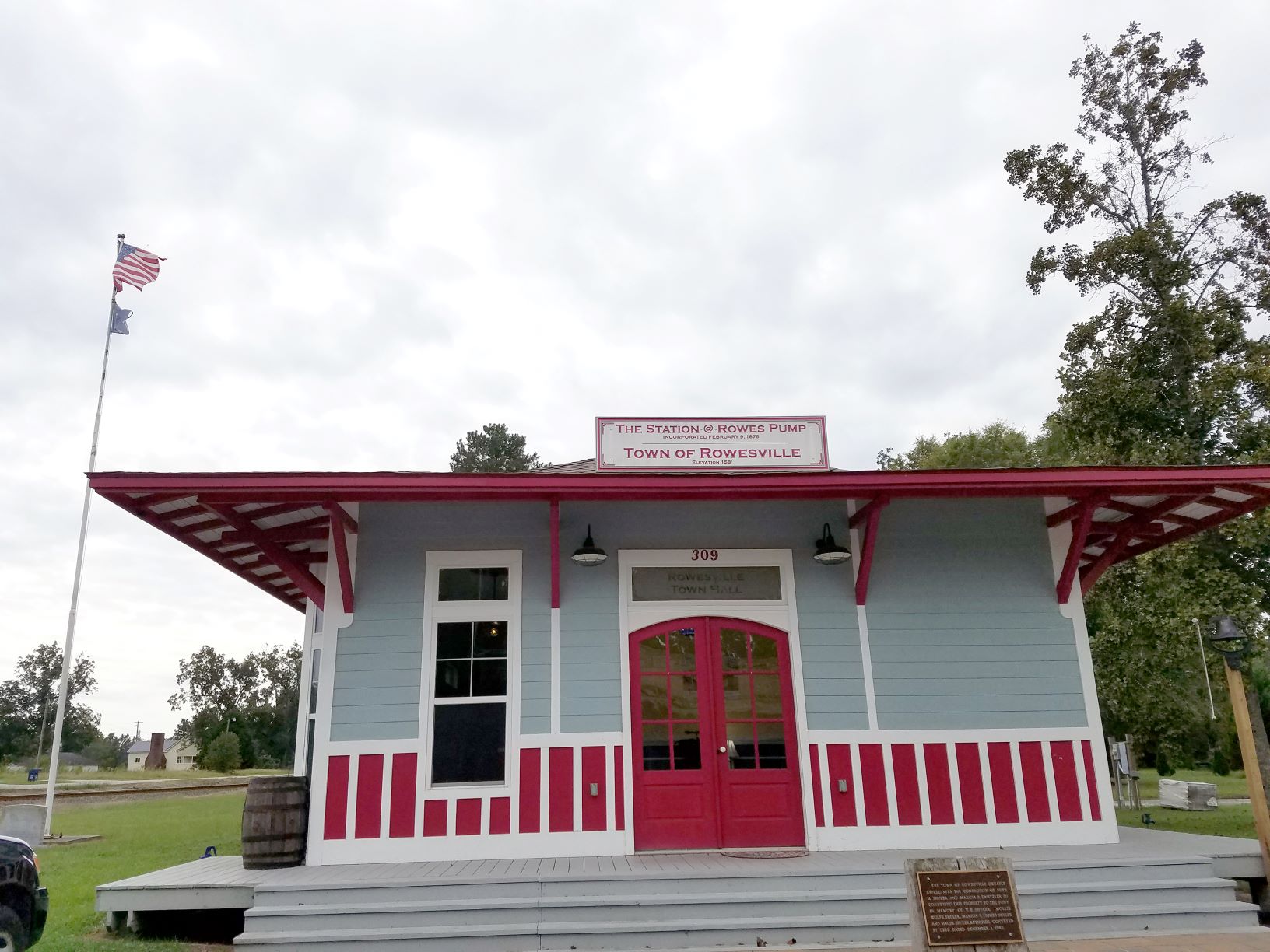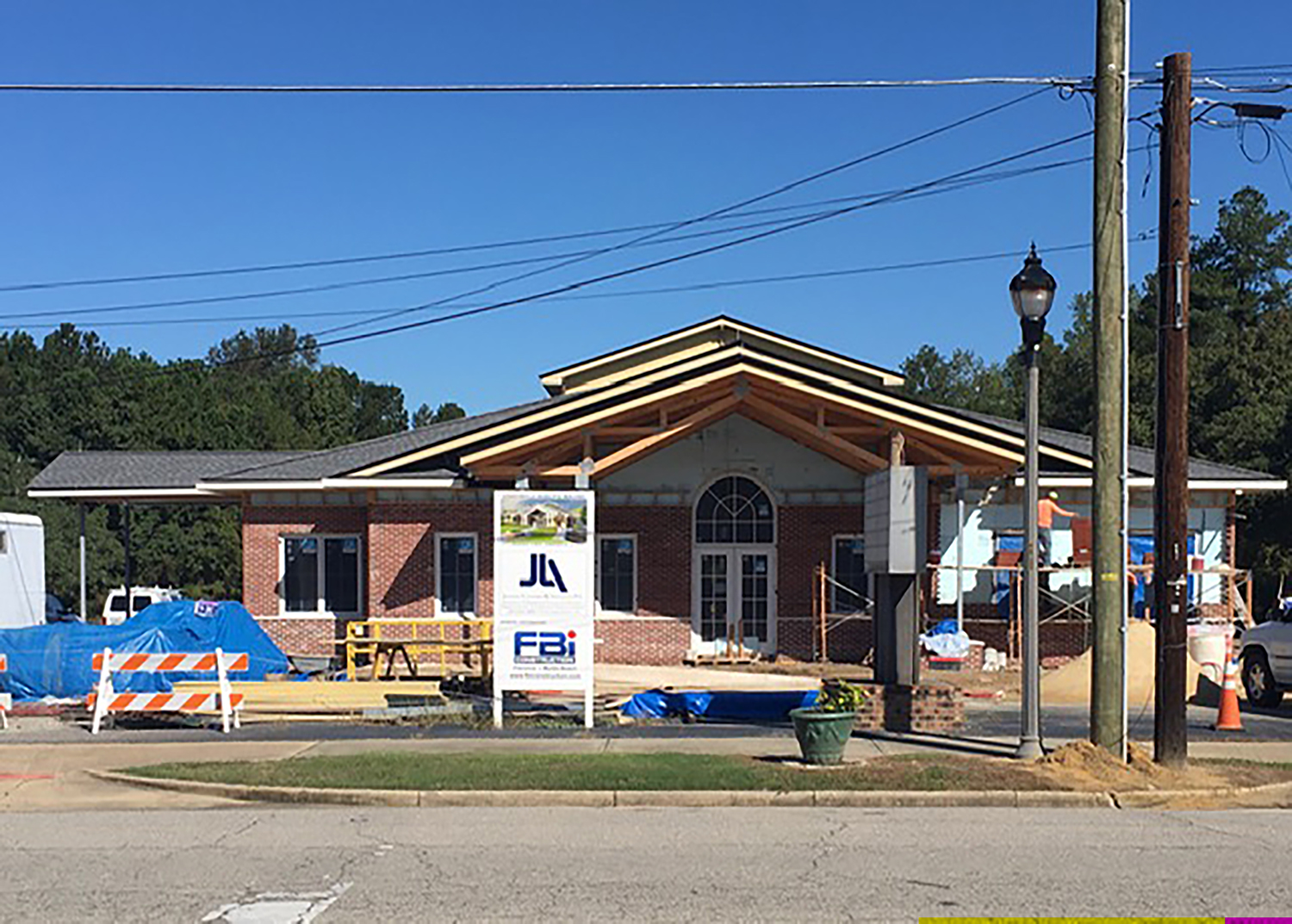A city hall plays many roles. It's a headquarters of government, and a place where staff and elected officials make decisions that affect every resident. It's where bills are paid and plans are filed. It's also where residents gather to learn and share information. Sometimes those heart-of-the-city experiences happen in classic downtown government buildings. Other times, the structures are a bit more unusual.
Whether it's a former doctor's office converted to city offices or a new municipal building that replaces an abandoned grocery store or a city hall that was built to resemble a historic town's long-gone railroad depot, towns and cities in South Carolina often get creative while creating dedicated spaces for municipal governments.
That's what happened in Lowrys, a town in Chester County that decided to repurpose a vacant building in the center of town.
Built in 1949, the brick structure once housed a community health center with clinics taking place one day a week with nurses from the county health department.
"Locals, who were children at the time, remember it as a place to get shots with long needles," said Marilyn Pressley, Lowrys town clerk.
In 1985, the town rented the building to Dr. Sam Stone, who eventually doubled the size of the building to accommodate his growing medical practice. After Dr. Stone moved to a larger space in Chester, the building housed a few businesses and later served as storage space.
"Mayor Joey Wilson, who had met with town council over the years at the fire department and Lowrys School Community Building, thought turning the building into a town hall would be beneficial to the town council and citizens of Lowrys," Pressley said.

Lowrys Town Hall served as medical offices for many years before its conversion to a governmental space. Photo: Town of Lowrys.
With the help of a $20,000 Hometown Economic Development Grant from the Municipal Association, Lowrys renovated the building and opened its town hall in 2019. It has become the spot where residents can learn about everything from how to rent out the community center building to details about the famous Lowrys Christmas Parade. It also offers spaces for community meetings.
"The town is small, but it has great people within and surrounding the town. First and foremost, the town hall was renovated for use as a place to conduct the business of the town. There is a dedicated office for the mayor, a workspace for the administrative assistant and a room for council meetings. The lobby of the building is meant to be an inviting area that greets people as they enter the building and as a place to showcase local art," Pressley said. "Another room in the building houses some photos and artifacts from the town. There are a few pieces from the old school, post office and train depot."
The new town hall in Rowesville can trace its roots to 1998, when Orangeburg County voters first passed its penny sales tax. But the town can trace the look of the new building back much farther.

Rowesville's town hall is built in the style of the town's former railroad depot.
Photo: Cory Brecklin, The Times and Democrat.
Council previously met in a 1950s-era 30-by-30-foot concrete block building. One side housed a fire truck; the other served as a meeting hall with no insulation, said Mayor Paul Bishop. By the time Bishop came into office in 2014, the town's portion of the penny tax had been earmarked for a new town hall.
"My first order of business was to decide on what we were going to build for a new town hall," he said.
After looking at options, Rowesville decided to build a town hall that resembled the town's old railroad depot. It had some 1920s and 1930s photographs of the former building, offering a starting point for the design.
"When that decision was made, we searched high and low to find the right one. We searched the Southern Railway line to find a depot that was similar to ours. We found one in Heath Springs," Bishop said.
So Bishop visited the site, took snapshots and had an architect draw plans for the building.
The town hall, which opened in 2019, doubles something as a museum. The interior is designed in a Victorian style, with a 1919 parlor stove, a luggage cart piled with bags and a hand-cranked telephone.
Doors from an old mercantile were recovered, refinished and used at the entrance to the council chambers.
"When the town was first incorporated in 1876, the first election to elect superintendents and managers of the town was held at the railroad depot," Bishop said. "Being a new town hall, what could be more fitting than to have the railroad depot rebuilt?"
Some cities decide to construct new city halls. In the Florence County City of Johnsonville, the council purchased property on East Broadway Street where an abandoned supermarket had once served the town.
"It hadn't operated in years. There was a 30,000-square-foot building sitting empty on the back of a lot. It was an eyesore," said City Administrator Jim Smith.

Johnsonville has built a new city hall where a vacant grocery store had once
stood. Photo: City of Johnsonville.
Council decided to use the property as the site for a new municipal building, offering needed space for city offices along with the opportunity to make an investment and potentially spur growth and development in downtown Johnsonville. The previous city hall was a 2,500-squarefoot building that was originally a bank branch, but it no longer served the city's needs, Smith said.
"We worked with Florence County to tear down the building. Then the site was vacant for six to nine months, and we used that time to develop a plan for a new municipal complex," he said.
The town put together a $2.2 million construction budget, with a 20-year loan at an attractive 2.5% interest rate. Johnsonville's 8,000-square-foot multipurpose building will house administrative and utility offices, a payment drive-thru and municipal court along with council chambers that seat 120 people, meeting areas and an emergency operations center.
"We have a full emergency operations center inside the building which I think, for the size of our town, will rival any town in South Carolina," Smith said. "It's not huge, the EOC, but it's going to be functional. The first hurricane or tornado that comes through here, we'll get our money's worth out of it. We can consolidate everything here, with everyone under one roof. Police, fire, all in one. We can manage any disaster out of it."
The construction project took about 12 months.
"This will be a 50-year building. This is a fully bricked, floor-to-ceiling building. The council wanted to build something that would service the needs of the future for the citizens of Johnsonville," Smith said.
He said some residents were skeptical when plans were announced.
"Some people thought it was overkill, or that we didn't need it in a city with only a couple thousand people. But as the building was built, people have stopped by to check on the progress. They've been curious," he said. "Once they see the building operational and see the capabilities, they see it's a wise investment."
However it gets built, a city hall promises to be a key part of that government and that community, often for many years to come.
